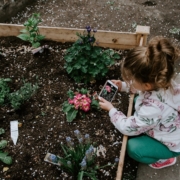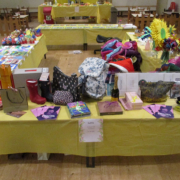Ten nature-inspired Montessori activities for spring
Spring is such a joyful time of year. As we notice buds and blossoms all around us, it’s hard not to think about the bigger picture—about preserving the beauty of our planet. There are so many big things that have gone on (and are still going on) in our world, over which we have very little control; this can sometimes be unsettling (not only for little ones but for mums and dads, too) but as spring blooms and the sun pops its head out, there is a perfect opportunity to get busy with some nature-themed activities that are fun, educational and proactive.

How can we make our world a better place? Here are some of our favourite spring time activities:
- Pick up rubbish in your community (litter pickers are great fun—and even include elements of eye-hand coordination!). Have a look at Waterhaul.co, which uses recycled fishing nets and face masks to make litter pickers.
- Take a walk or ride a bicycle to the shop or playground instead of driving or bussing.
- Make natural cleaning supplies. Madeleineolivia.co.uk has some good ideas.
- Make a bird feeder for your garden. Happyhooligans.ca has some great ideas!
- Hang clothes on a clothesline (perhaps you’ll need to make one), explaining that this will save electricity (if you usually use a dryer). Also get the children to help with hanging the washing! They love hands-on activities.
- Pick fresh fruit and vegetables.
- Cooking and baking with your freshly picked produce.
- Do your own composting (you can start with the peels, cores etc. from the fruit and veg you’ve grown/picked and cooked. Learn.eartheasy.com explains how to do it.
- Plant seeds (flowers or perhaps start your own herb garden).
- Get the children involved in recycling—sorting materials etc.
Earth Day is on April 22, 2022; there may be some fun things going on in your community for children and families to get involved in. And always remember; part of Montessori is getting messy, getting involved and allowing children the space to learn through practise (and cleaning up afterwards, of course).
Photo by Filip Urban on Unsplash











